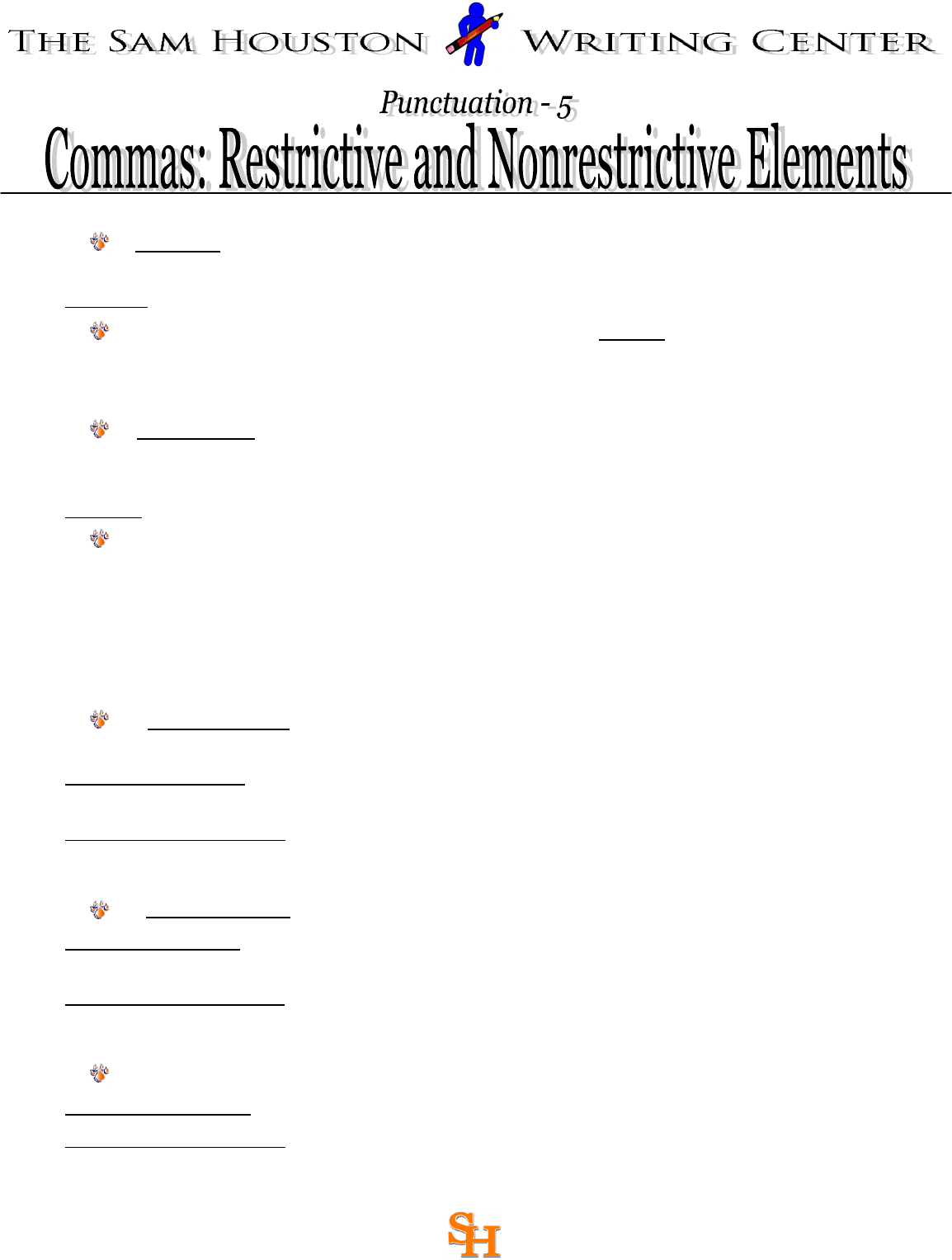
Use a comma to set off a nonrestrictive element.
A restrictive element restricts the meaning of the word it modifies and is therefore
essential to the meaning of the sentence. It is not set off by commas.
Example: The children needed shoes that were sturdy.
In this sentence we learn that the children needed a specific type of shoes; therefore
the clause “that were sturdy” is essential to the sentence and does not have a comma.
The word that is used with restrictive clauses.
A nonrestrictive element describes a word whose meaning is already clear without the
additional words. It is not essential to the meaning of the sentence and is set off with
commas.
Example: The children needed sturdy shoes, which were expensive.
In this sentence we learn an extra fact—the shoes were expensive. That phrase merely
adds more information, and it needs a comma because it is not vital to the meaning of
the sentence. The word which is used with unrestrictive clauses.
.
Elements that may be restrictive or nonrestrictive include:
adjective clauses, adjective phrases, and appositives.
An adjective clause usually follows the noun or pronoun it describes and begins with a
relative pronoun (who, whom, whose, which, that) or a relative adverb (when, where).
Restrictive Example: A Corporation that has government contracts must maintain careful
personnel records.
Non-Restrictive Example: The U. S. Coast Survey, which was established in 1807, was the
first scientific agency in this country.
An adjective phrase is a prepositional or verbal phrase that functions as an adjective.
Restrictive Example: One corner of the attic was filled with newspapers dating from the turn of
the century.
Non-Restrictive Example: The helicopter, with its 100,000-candlepower spotlight illuminating
the area, circled above.
Appositives are nouns or pronouns that rename a nearby noun.
Restrictive Example: Rick James’ song “Fire It Up” was blasted out of amplifiers ten feet tall.
Non-Restrictive Example: Darwin’s most important book, On the Origin of Species, was the
result of many years of research.
The Longwood Guide to Writing (Second Edition) by Ronald F. Lunsford and Bill Bridges.
Last updated by JG on 7/13/2010
